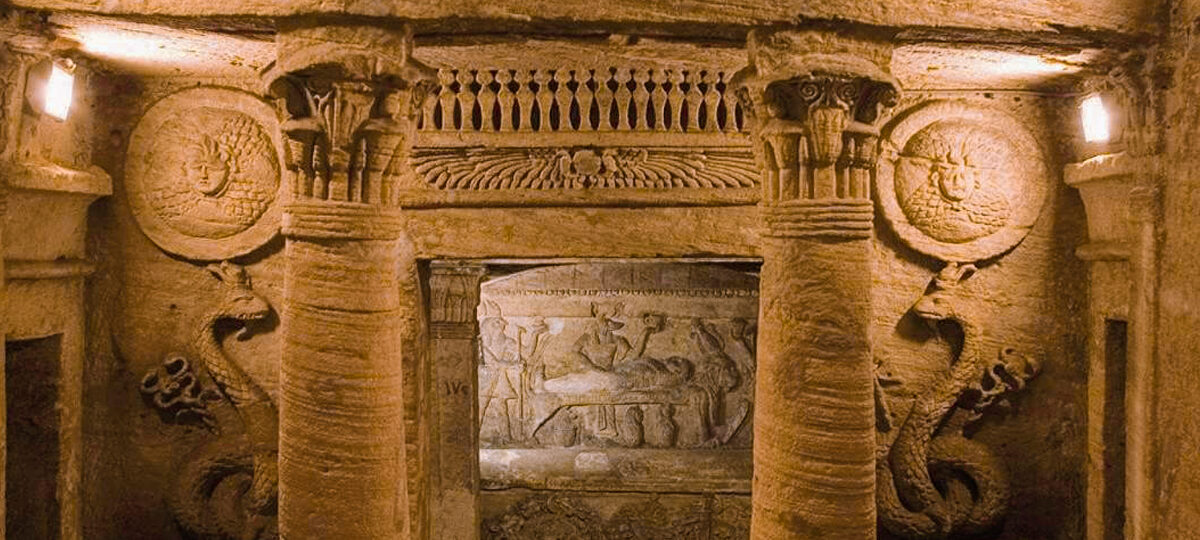Catacombs of Kom el Shoqafa
The Arabic name, “the hill of broken pots,” comes from the broken dishes and plates that were common in the area before the tombs underneath it were found. The name comes from the fact that the tombs underneath it could be seen. At the time, the name had not yet been given its Arabic form. This vast cemetery is one of the “Seven Wonders of the Middle Ages” because its architecture and design are so beautiful. The tombs are from Roman times and have beautiful carvings.

It is thought that the tombs at Kom El-Shuqafa were used to bury the dead of a wealthy Roman family sometime in the second century AD. Even so, the building was made more prominent and used until the fourth century AD. It is thought that the graves were built in a neoclassical style and laid out in a rectangle.
In addition to the large cemetery that can be seen here, there is also a mass grave that is thought to have been built by the Roman Emperor Caracalla in Alexandria in 215 AD, when people were being killed in large numbers. The legend says there may be human and animal bones in the tomb.
The graves circle the spiral staircase, which goes down many stories before reaching the bottom. The lowest floors of the tombs are underwater, but the vaults above ground are full of sculptures and paintings and are easy to get into. The strange mix of Greek, Roman, and Egyptian symbols makes sense when you think about when they were built.

Alexander the Great and the Ptolemies left Egypt with a lot of things. Even though the Roman Empire ruled Egypt in the first century AD, the effects of ancient Egyptian and Greek culture were still strong throughout the country.
This happened even though Rome had ruled Egypt for a hundred years before.
Fusion figures are the carvings on the tomb’s walls at this ancient site. To make mashups, Egyptian gods are dressed in clothes from Rome and Greece. Parts of Roman and Greek mythology and pharaonic symbols are also used in fusion depictions of animals.

